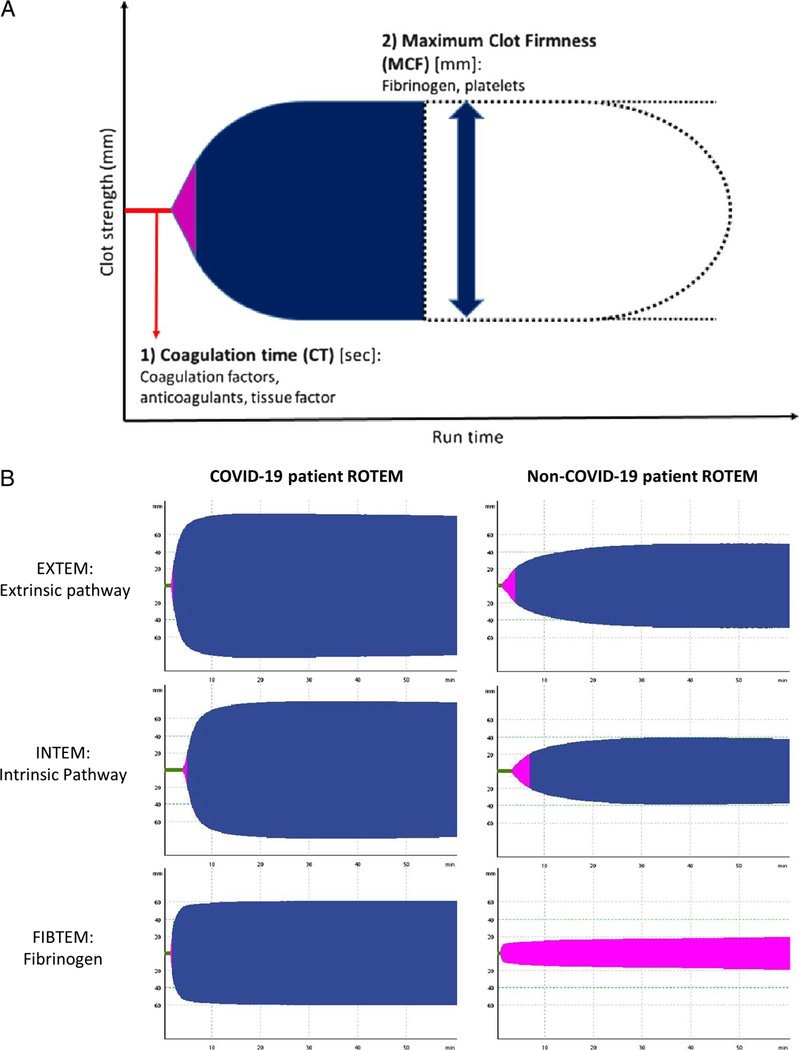Figure 1.
Fibrinogen driven hypercoagulability in critically ill COVID-19 patients compared with non−COVID-19 patients detectable using ROTEM. (A) Rotational thromboelastometry assesses developing blood clot strength (y axis; millimeters) over time (x axis; seconds) via rotational shear conditions on a whole blood sample. Time for initial blood clot formation is assessed using CT. This is reflective of coagulation factor contribution to clotting kinetics in the extrinsic (EXTEM) or intrinsic (INTEM) pathway. Clot strength is assessed using MCF. This is reflective of fibrinogen and platelet contribution to clot strength. Increased MCF is indicative of hypercoagulable clot characteristics. A separate FIBTEM will assess whether clot strength abnormalities are driven by fibrinogen contribution to clot formation. (B) Rotational thromboelastometry tracing revealing evidence of significant hypercoagulabile clot characteristics driven by elevated fibrinogen contribution to blood clot strength in COVID-19 compared with non−COVID-19 patients.

